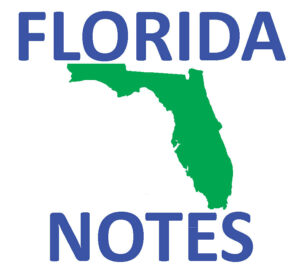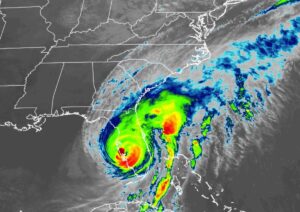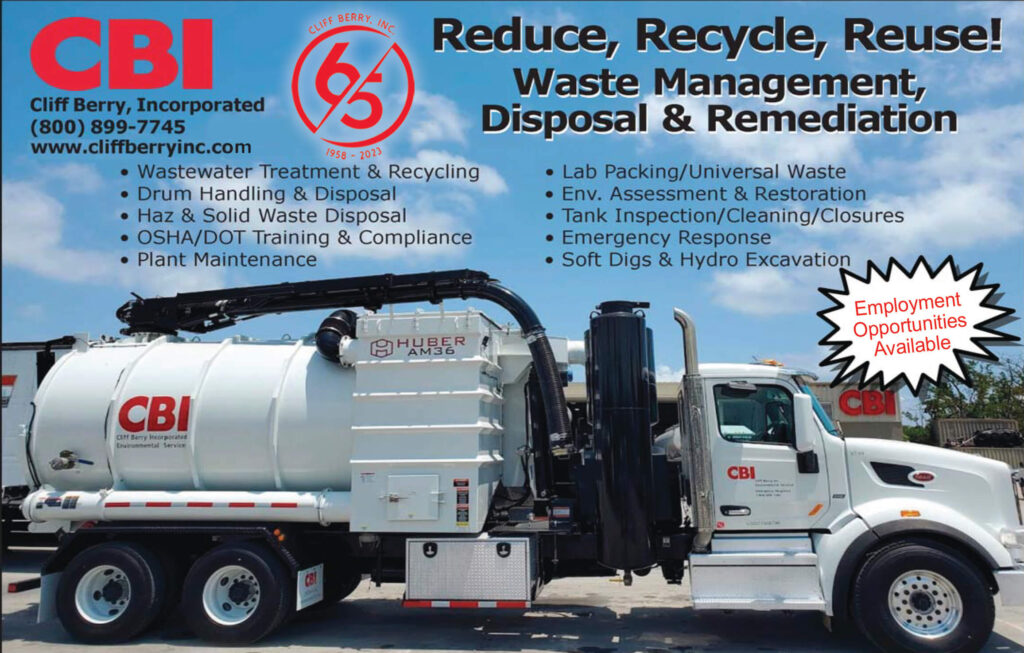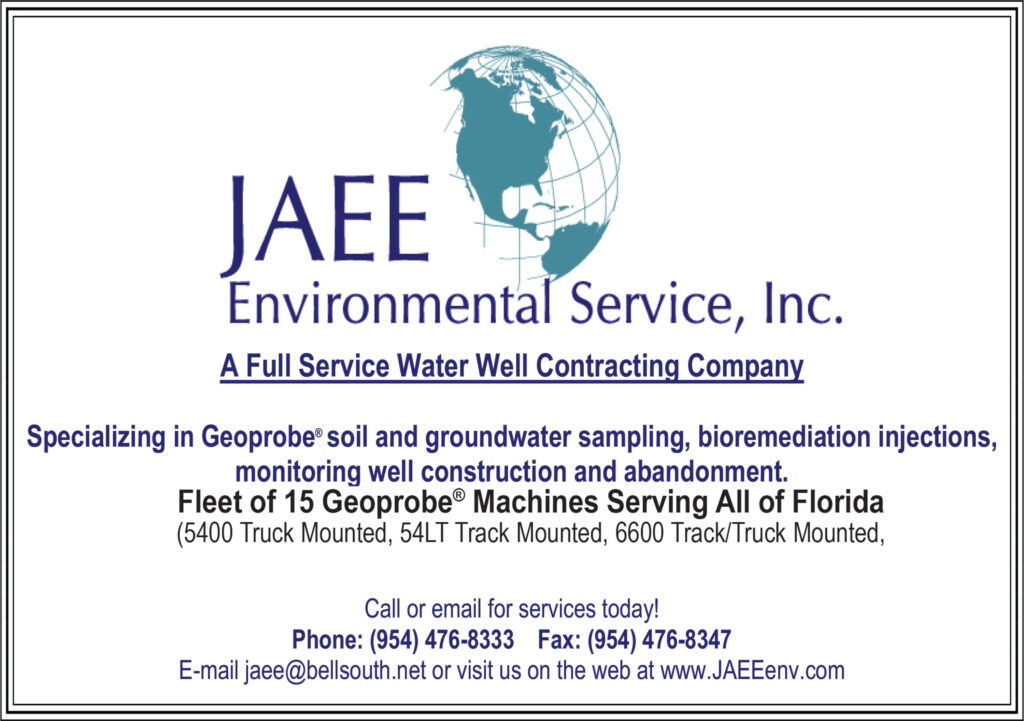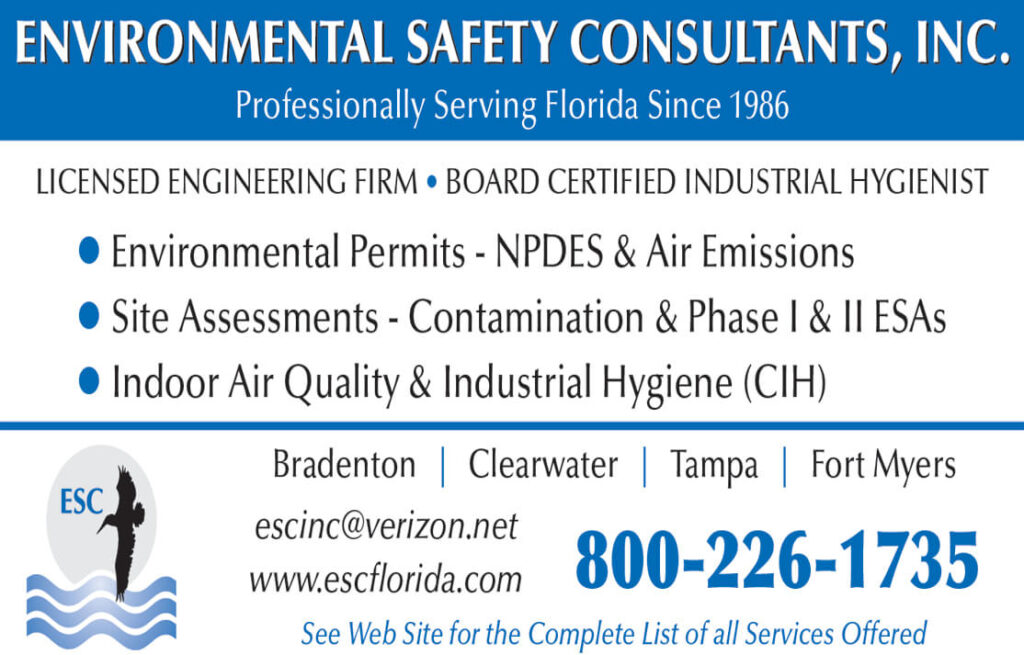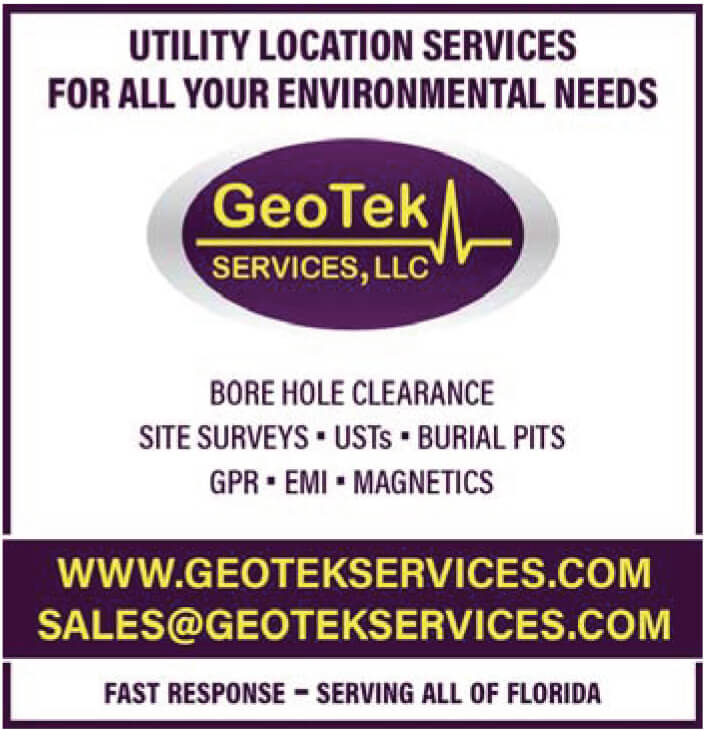STAFF & WIRE REPORTS
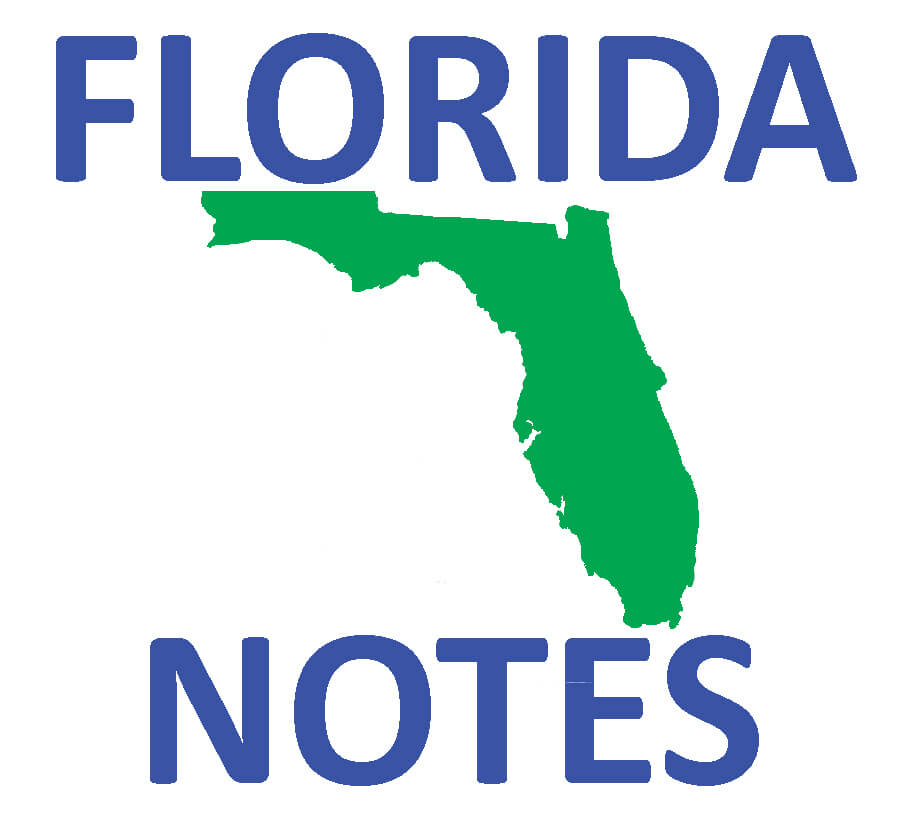
Florida Fish and Wildlife Conservation Commission (FWC) estimates Hurricane Ian displaced more than 7,000 vessels across both land and water. FWC deployed personnel to partner with local agencies to assess vessels requiring attention from their owners by mid-November to prevent vessels from being considered derelict.
“Wave One of the FWC Displaced Vessel Deployment Team returned home after a very productive two weeks in the field. This group of dedicated officers worked long hours locating derelict vessels and contacting owners. Wave Two is now in place and will carry on with the mission,” said FWC Boating and Waterways Section Representative Capt. Travis Franklin.
The FWC is working closely with the Division of Emergency Management, the Department of Environmental Protection, the Coast Guard, and local governments to identify and remove vessels and other debris from waterways as well as private and commercial properties.
The newly created State Debris Cleanup Program is assisting Hurricane Ian survivors with the removal of displaced and abandoned property.
Water management district
governing board elects new leaders
Sen. Rob Bradley of Fleming Island has been re-elected to serve as the St. Johns River Water Management District’s Governing Board Chair for a second year. Maryam Ghyabi-White of Ormond Beach has been elected to serve as vice chair; Ron Howse of Cocoa as treasurer; and J. Chris Peterson of Winter Park as secretary.
The District’s Governing Board includes nine members representing different geographical areas across the district’s 18-county region.
Board members are appointed by the governor to four-year terms and they represent diverse interests offering expertise in agriculture, environmental protection, consulting, geology, business, recreation, transportation, and law.
The Board is tasked to set District policies and meets monthly with staff and members of the public to discuss District operations.
The other existing board members include Gen. Douglas Burnett of St. Augustine, Douglas C. Bournique of Vero Beach, Cole Oliver of Merritt Island, Ryan Atwood of Mount Dora and Janet Price of Fernandina Beach.
Pensacola succeeds in preserving Spring Street Heritage Oak Tree
The City of Pensacola has reached an agreement to preserve a heritage live oak tree. The city has endeavored to protect this heritage oak since 2019.
Pensacola and the Vickery family, who own the property on which the tree is located, have been engaged in a protracted legal battle over the tree.
The latest judgement was resolved through an agreement with the North Hill Preservation District property owners who have agreed to preserve the live oak and the city has agreed to reimburse them for attorneys’ fees.
Ocala activates winter
irrigation restrictions
The City of Ocala and St. Johns River Water Management District are reminding residents to reset their automatic sprinkler systems for winter. Ocala only allows irrigation on specific days and excludes irrigation on Tuesdays and between 10 am to 4 p.m. on all days during the winter months.
“Outdoor irrigation accounts for nearly half of most Floridians’ monthly water bill,” said St. Johns River Water Management District Executive Director Mike Register. “Lawns and landscape require less water during this time of year; we can conserve and maintain healthy lawns and landscapes.”
The landscape irrigation schedule allows odd-numbered residences to water on Saturdays and even-numbered addresses to water on Sundays.
District giving $1 million to
growers for water conservation
The St. Johns River Water Management District Governing Board has approved the execution of 13 contracts that will provide local growers with over $1.1 million in cost-share funds for water conservation.
The projects are anticipated to reduce water use by 73 million gallons per year while reducing the volume of harmful nutrients that could enter nearby water bodies.
“Over the last seven years, the District’s Agricultural Cost-Share Program has helped complete 136 projects across our 18-county region,” said St. Johns River Water Management District Executive Director Mike Register. “Both the District and our Governing Board are committed to continuing the partnership with local growers who are choosing to implement projects that conserve water and protect our water supply.”
The projects will receive up to 75 percent of cooperative funding, up to $250,000 per applicant annually, toward the design, construction and implementation of technologies and strategies to improve water efficiencies and protect natural systems. “They really want us to get this technology and implement it,” said Bill Lennon, a 5th-generation Florida citrus farmer who has participated in several cost-share projects with the District. “They’re helping us conserve resources and help the environment. It’s a real partnership.” Examples of projects eligible for cost-share funding include: irrigation conversions and/or retrofits, soil moisture sensors, weather stations, and precision fertilizer placement equipment.
City of Tallahassee opens
annual Adopt-a-Tree program
The City of Tallahassee has opened its Adopt-a-Tree Program offering free trees to eligible homeowners within the city limits. The program is funded through development projects and trees are available on a ‘first-come first-served basis’. Roughly 300 adopted trees are planted each year.
The city will begin planting the trees in mid-January.
The city provides and plants selected native and naturalized trees, increasing the community’s urban forest canopy. At 55 percent, the city boasts one of the highest percentages of tree coverage in the nation.
The trees are native species, including Nuttall Oak, Pond Cypress, and Flatwoods Plum.
Nuttall Oaks work as shade trees and display yellow to red fall colors; they are fast growing and can reach up to 80 feet, providing a narrow canopy of about 45 feet in width. Pond Cypress have a conical shape and drop their needles in winter; they display fall colors and are disease, pest, and wind resistant while requiring little maintenance.
Flatwoods Plum is a Florida native species with white blooms that attract pollinators and provides fall fruits for birds and other wildlife. Special criteria are required for this tree due to limited supply.
Tree adoption applications are available at Talgov.com.
District’s October Hydrologic
Conditions report available
The Suwannee River Water Management District (District) has released its Hydrologic Conditions Report for the month of October. The District publishes the reports to enhance public awareness of water levels and the impact rainfall has on current conditions in the District’s 15 north-central Florida counties. Reports encompassing the past five years are available on the District’s web site under the Science & Data tab.
The monthly reports highlight rainfall, surface water and groundwater levels, a climate and drought outlook, as well as other scientific data that can be utilized to help educate the public about the impact rainfall has on North Florida.
The District received an average of 0.41 inches of rain in October, which was about 86 percent lower than the 1932-2021 average of 2.88 inches. The low rainfall levels increased the rainfall deficit to 6.35 inches for the 12-month period ending Oct. 31.
The data indicates less rainfall was received during the previous 12 months than the historical average. River gauge measurements were mostly normal with some outliers.
The Steinhatchee River gauge showed extremely low flows at the end of October while the Ichetucknee River ended the month in the above normal range.
The district also reported that Upper Florida Aquifer levels ranged from extremely high (above the 90th percentile) in the eastern portion of the District to an extremely low (below the 10th percentile) area in Lafayette County at the end of October.
Fort Lauderdale offers guidance
on King Tides, trees
In addition to loss of habitat, climate change, pests, diseases, and storms, Fort Lauderdale notes the trees of coastal Florida face the challenge of exposure to salt water during seasonal king tide events.
King Tides are the highest tides of the year, frequently occurring between September and November. Their occurrence corresponds to specific phases of the moon and their impacts can be worsened by other factors such as storms, on display by the king tide enhanced coastal impacts of Hurricane Nicole.
Saltwater flooding can cause tree impacts including premature leaf drop, leaf burn, tree instability and occasionally tree death. To combat the effects, Fort Lauderdale recommends a series of considerations when planting trees in locations vulnerable to tidal flooding. Planting Florida native salt-tolerant trees such as Orange Geiger, Gumbo Limbo, Silver and Green Buttonwood, and Southern Red Cedar enhances the probability the tree will survive saltwater exposure.
The city also recommends mounded planting to elevate the tree’s roots above grade to reduce saltwater exposure.
Trees that are salt intolerant and/or stressed due to improper planting and maintenance are often the first to succumb to saltwater flooding events.
Mounded planting can help protect newly planted trees from flooding and future grade changes.
November was Manatee
Awareness Month
Save the Manatee Club (SMC) reminds Floridians that November is Manatee Awareness Month, an annual opportunity to celebrate Florida’s state marine mammal and raise awareness of ongoing threats to manatees and their aquatic habitat.
Manatee Awareness Month has been a staple of manatee conservation since 1979.
Manatees begin migrating to Florida’s warm water springs and refuges in November. SMC notes that despite their size, manatees have slower metabolisms and less fat layers than other marine mammals so they cannot survive prolonged exposure to cold water temperatures.
The public can play a direct and critical role in protecting manatees by being aware of their presence in the water, learning how to recognize if something is wrong, and knowing how to report problems to the Fish and Wildlife Commission at 888 404-FWCC (3922).
Throughout Manatee Awareness Month, SMC shared manatee facts, videos, quizzes, and opportunities to take action on its website at savethemanatee.org/MAM. SMC also offered free materials for boaters and waterfront property owners to help promote manatee safety including aluminum “Slow Please” signs, with information on how to report a manatee in distress. Supporters can view available resources and learn how to request them at savethemanatee.org/resources.
Black Creek Water Resource
Development Project celebrated
The St. Johns River Water Management District gathered with local and regional partners, residents, and others in October to celebrate the launching of the Black Creek Water Resource Development project.
The Black Creek project will increase recharge to the Upper Floridan aquifer in northeast Florida and improve water levels in lakes Brooklyn and Geneva.
“As our state continues to grow, we need to find more innovative and creative ways to meet water supply needs while still protecting our natural resources,” said St. Johns River Water Management District Executive Director Mike Register. “This project is a perfect example of that and is the result of years of collaboration between the community, state, local and private partners and vital stakeholders like Save Our Lakes Organization.”
The project will pump excess water from Black Creek through a 17-mile pipeline into a passive treatment system where color and minor nutrients will be removed. The treated water will then flow into Alligator Creek, subsequently discharging into Lake Brooklyn where it will recharge the aquifer.
The maximum amount of water diverted from Black Creek will not exceed 10 MGD to ensure the protection of natural resources within the creek. Diversions will only be made when sufficient flow is available.
“This community has been dealing with unstable lakes for over 30 years, so to see this project become a reality is really incredible,” said Save Our Lakes Organization President Vivian Katz James. “I am so thankful to Chair Bradley, the St. Johns River Water Management District and all the funding partners. The community now has an opportunity to see this beautiful lake region recover.”
Funding for the project was provided in the St. Johns River and Keystone Heights Lake Region Projects legislative appropriations over three years beginning in 2017. The total appropriation was more than $48 million, of which nearly $43.4 million was allocated to the Black Creek project. Additionally, north Florida utilities are contributing $19.2 million toward the project. Those utilities include Clay County Utility Authority, Gainesville Regional Utilities, St. Johns County Utilities, and JEA. The remaining balance will be provided from District funds.
Boaters play a key role in keeping Fort Lauderdale waterways clean
Twelve of the 27 marinas located in the City of Fort Lauderdale are designated as clean marinas by the Florida Department of Environmental Protection (FDEP) including the City’s New River Downtown Docks and Cooley’s Landing marinas. Both marinas are part of the Florida Clean Marina Program offering a total of 149 slips and four boat launch ramps.
The City’s marinas provide free sewage pump-out services to marina patrons and the boating public.
The city also offers a boat ramp with access to a self-serve pump-out system at Cox’s Landing in addition to the marinas. Fort Lauderdale maintains and operates a total of five pumpout systems at three different locations. There are also 5 privately owned marinas and shipyards that have operational pumpout systems within city limits.
After a day on the water, boaters are encouraged to use onshore pumpout facilities and waste dump receptacles to reduce or eliminate the discharge of sewage into waters. Untreated sewage should never be discharged in U.S. territory waters and treated sewage should not be discharged while moored at the marina. Boaters are also encouraged to use land-based showers and rest rooms.
Tersus Environmental
receives new patent
Tersus Environmental officially was granted U.S. patent 552 for “Zero-Valent Metal Suspension in Non-Aqueous Phase for Water Remediation.” on November 8th. This is the company’s second patent related to zero-valent metal particle suspensions which follows their 2021 patent claims are for “Method and a Chemical Composition for Accelerated In Situ Biochemical Remediation”
Tersus notes the ‘522 patent is directed towards a zero-valent metal particle suspension for the remediation of soil and groundwater. The claims are also generally directed towards a chemical composition comprising vegetable oil, an oil thickening agent, a surfactant, and a particulate zero-valent metal forming a zero-valent metal suspension in a non-aqueous phase, wherein said suspension network comprises zero-valent metal particles encapsulated within a liquid membrane formed of the vegetable oil.
Tersus indicates the 552 patent further strengthens the company’s intellectual property coverage for the diverse selection of products and technologies addressing the remediation of contaminated soils and aquifers.●









